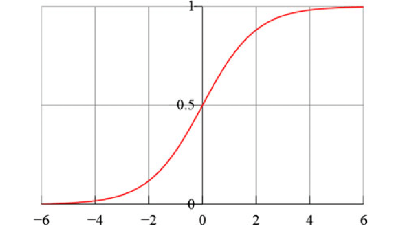Intro 🔗
Five years ago, I gave a presentation to university students titled <Career Snowball>. My own path forward was unclear, but looking back on my 10 years as a salaried employee, I was able to organize my thoughts on how a GAP is created in career.
- Growth: We now live in a world where intangible value has overwhelmed physical value, allowing careers to grow by factors of 100. In the physical world, even the tallest person is less than twice the height of an average person. But in the world of intangible value, the wealth created by the founders of Google is more than 10,000 times my own. Even excluding such extreme examples, differences of 10x to 100x are common.
- Alignment: You can’t achieve meaningful growth just by working hard at any random task. What you do and how you do it can be far more important than the sheer volume of effort you put in. And since the path to growth isn’t always smooth, you sometimes need to change the game entirely.
- Persistence: It’s difficult to create massive change in a short time, but a good strategy becomes incredibly powerful when sustained over the long run. You can achieve compounding growth by repeatedly setting goals that are appropriately challenging, making an attempt, analyzing the outcome, and iterating on the process.
I deliberately did not mention individual “ability” in this framework. This is because the core of any good strategy is to focus on what you can do right now. In most cases, the power of a long time horizon is far greater than small differences in individual talent. The impact of one year may be modest, but the power of five, ten, or twenty years can overcome most challenges. Even when the gaps in skill seem significant in high school, their actual impact on where our careers end up in our 40s is often vastly overestimated.

While the power of a long time horizon is immense, we cannot stop the flow of time, and five to ten years often disappear like sand slipping through our fingers. As an advanced version of my previous article, I’ve organized my thoughts on how to handle the formidable power of TIME. In the years since, I’ve been a team lead, changed jobs twice, moved to a different state, and started raising a child, so I hope my perspective has gained a bit more depth — even though my own path forward is still as uncertain as ever.
- Timeline non-linearity: Having ten times as much time doesn’t mean you’ll produce ten times the results. If you only have six months, you have to stick with your current methods for the most part. But if you have five years, the possibility opens up to play a completely different game.
- Incentives for win-win: The world can seem like a zero-sum game in the short term, but significant change comes from win-win relationships. Effectively solving other people’s problems serves as a compass for achieving non-linear change.
- Market force: Without realizing it, we all belong to various markets, such as “millennial urban consumers” or “junior designers in the tech industry.” These markets have no clear boundaries, yet they exert an influence far more powerful than any individual’s ability.
- Execution for non-linearity: You can know a foreign language’s grammar inside and out but still be unable to speak a single word; you can recite algorithms endlessly but fail to write simple code. Non-linear change is forged not through more knowledge, but through execution and iteration.
1. Timeline Non-linearity 🔗
From outside the board, you have an eight-point advantage. – Go proverb
Five to ten years is enough time to create significant changes. You can set goals that seem impossible right now—like mastering a foreign language, changing careers, moving abroad, or starting a business—by believing in your future self. However, the larger the gap between your goal and your present reality, the harder it is to achieve with linear effort alone.
Consider a prospective software engineer who focuses on solving LeetCode problems. This can be an effective strategy for building problem-solving and basic implementation skills, and landing a first job. However, once they are in the role, solving the 501st algorithm puzzle will not, on its own, teach them how to design a scalable, maintainable software system. That leap from a puzzle-solver to an architect requires a completely different approach.
The pattern we must guard against is a sigmoid-like function: one where you are
improving at every single moment, but from a distance, you’re not making much
real progress (mathematically, S(t + 1) > S(t) is always true, but S(t)
never exceeds its limit of 1).

A common example of non-linear change is to redefine the game itself. If my job is to flip burgers, my efforts to do it faster have a hard limit. Instead, I need to think about managing a team or designing an automated grill that flips them for me.
While we face the inherent difficulty of thinking in linear terms, we also need conviction and risk management. For instance, if the automated grill initially burns or crushes half the patties, you can’t help but have doubts about whether to keep pushing down that path. Even if the direction is correct, if you cannot bear the costs that arise from the chaos in the middle, that path may not be right for you at this moment.
1.a. Cases of Non-linear Change 🔗
Non-linear change manifests across various dimensions.
- Refactoring: In software development, an existing structure can become a bottleneck, or a new technology can boost efficiency. In such cases, migration that skillfully weaves new assumptions into the architecture can dramatically improve productivity without changing the outward appearance.
- Role Change: An individual contributor can impact the productivity of many more people by taking on the role of a manager or an architect. If you can improve the productivity of 10 people by 20%, a simple calculation shows you are effectively performing the role of two additional people.
- Re-org: In the 1980s, Intel abandoned the memory market it had pioneered and went all-in on CPU development, eventually dominating a much larger market. While there are many successful transformations, like Apple with mobile phones or Amazon with cloud computing, it is also frighteningly common for once-dominant companies like Yahoo or Nokia to be rendered obsolete.
- Industrial Transformation: As shown in the book <How Asia Works>, East Asian countries achieved non-linear change by transforming from low-productivity agricultural nations into manufacturing and export powerhouses. The transformation had impacts on hundreds of millions of people.
2. Incentives for Win-Win 🔗
We’ve had three big ideas at Amazon that we’ve stuck with for 18 years, and they’re the reason we’re successful: Put the customer first. Invent. And be patient.
– Jeff Bezos
Non-linear change is difficult because its direction, scale, and timing are all hard to evaluate. Raising a test score from 80 to 90 is quite straightforward, but all the cases of non-linear change could easily go off the rails. This is where a win-win provides powerful signals and momentum. If many people can benefit from what I am doing, then that group will want my work to succeed and will help me. And this help is far more powerful than my strength alone. While you can serve external customers directly, you can also find “customers” right next to you, such as your colleagues and managers.
For example, the refactoring projects mentioned earlier often don’t end well. Even if the value seems clear to the practitioner, it might not be convincing to others, and it could be the first thing to be cut if circumstances change. While it’s common for these projects to fail, if there is real value, a strategy of directly involving the “customers” who will benefit often determines the project’s success. For instance, if 20% of the work can deliver tangible benefits to two or three teams, it becomes much easier to use that as a foothold to request support for the remaining 80%.
On a larger scale, the foundation of <Shareholder Capitalism> is also a win-win. It’s difficult to raise the value of a company simply by paying good dividends or squeezing employees. Outside of a monopoly, what matters is to make products that customers want efficiently. To achieve this difficult task, management needs its employees to discover and execute good projects. This alignment extends down to the most junior team members. Under a shared goal, by effectively solving other people’s problems, you can leverage more power than you were initially given.

The beauty of a win-win is that it enables cooperation with people you don’t know. This is especially important for newcomers and immigrants who have no real support base, but it becomes a powerful force for anyone because it allows for results on a much larger scale than one can achieve alone. In fact, many Forbes 500 CEOs started at the bottom. While luck certainly played a role, their ability to fully leverage incentives to create win-wins was essential for achieving their non-linear change.
3. Market Force 🔗
When large numbers of people are after the same commodity, be it a stock, a bond, or a job, the commodity quickly becomes overvalued.
– Michael Lewis <Liar’s Poker>
Consider the creators behind K-dramas. For years, their high-quality work was largely confined to domestic markets. Then, with Netflix, the exact same level of talent began generating exponentially more revenue and global influence. The deciding factor was not a sudden leap in skill or charm, but a change in the market. If entire industries are subject to the power of the market, it is a dangerous delusion to think that any single person can overcome it.
Market dynamics beyond supply-and-demand is also worth noting. In a rigid market, simple changes can be met with fierce resistance, and slow changes are often sufficiently absorbed by the linear improvements of existing participants. In a fluctuating market, however, a constant stream of unmet demand appears, which individuals can target for non-linear gains.
As discussed in the article <Macro Dev Wave and Career>, the reason developer roles have been relatively favorable in the U.S. was decisively due to the overall market being in flux, creating many opportunities while the supply of talent remained insufficient. It’s the same principle as the relative value of a college graduate being vastly different in a low-growth society where everyone attends university, compared to a fast-growing society with a low college attendance rate.

If you’re lucky, you might be able to create growth in one market for a long time, but the majority of people will need to switch from time to time. We can look at early investors in Nvidia or Tesla and talk about perseverance, but most starting points are not even as promising as Yahoo or GoPro once were.
The key factors that define a market are often: <Country (Region), Company (Industry), and Role>. If you change everything at once, you probably have to start over from scratch, but if you change only one at a time, you can effectively carry over your existing momentum. Some examples: becoming an eng manager on the same team; changing countries on a globally distributed team; changing companies while doing similar work; or collaborating with various job roles and then transitioning into a colleague’s role. One by one, you can eventually change all three variables, if needed.
Nothing in the world is permanent, and the marke itself is constantly changing. Working on the same team in the same company can be a completely different market depending on the era, and what is a huge opportunity for one person may be stagnation for another. Of course, it is impossible to perfectly predict and prepare for these factors. However, an individual can change much faster than the vast market can, so good opportunities tend to gravitate toward those who take action.
4. Execution for Non-linearity 🔗
You only have to do a very few things right in your life so long as you don’t do too many things wrong.
– Warren Buffett
We are easily trapped by linear constraints. If you get an 80 on a test, you then aim for a 90, then 95, then 98. No one would call these bad goals, and they require meaningful effort, but even with infinite time, you cannot break past the hard ceiling, like the sigmoid function mentioned earlier. In contrast, non-linear changes are messier and harder to quantify. It’s not easy to distinguish between a good change and a bad one midway through, and advice from others has its limits. A good way to manage this chaos is to advance by creating visible milestones.
The refactoring mentioned before is one example; a tangible result that actually works, even if imperfect, makes it much easier to make further progress. In a dynamic market, a result that solves other people’s problems has particularly high value, which contrasts with the traditional value of limited degrees or certificates in static markets. One result becomes a stepping stone for the next opportunity, sometimes creating a non-linear trajectory through compounding.
Nevertheless, because non-linear execution is more disruptive than traditional strategies, a slightly different approach is useful.
- Deep Work and Priority: To break out of a linear frame, you must question even commonly accepted notions, which requires depth and a lot of energy. If you don’t set priorities and cut out the rest, you will be swept away by tasks that are immediately doable or easily quantifiable. This is the opposite of the linear approach, which involves completing as many assigned tasks as possible or getting high scores in every subject.
- Courage (or Simplicity): Non-linear change has no right answer. It is a continuous process of creating unfamiliar results or moving into unknown markets. It is a frightening thing to decline the immediate tasks that others are doing and invest in a result that may not be recognized right away. The positivity needed to sustain this courage, or a simple “Just do it” drive, is also different from the perseverance found in a linear structure.
- Room for Failure: Non-linear change involves high uncertainty, and it’s easy for things not to go as expected. You have to manage the blow from unforeseen problems and may have to endure a period without market recognition. If you insist on a situation where you “must succeed,” you can never escape the stable, linear structure.
- Iteration: Even if the expected value of a non-linear action is high, it can be inferior to the stable, linear path if the number of attempts is low. Rather than dwelling on the outcome of each attempt, it is more rational to review it and move on to the next. From the perspective of increasing the number of attempts, health is also a core resource for one’s career.
Epilogue 🔗
Advice like “do what you love” or “overcome it with effort” is heavily influenced by survivor bias. To see if a strategy is truly valid, you must count not only the successes but the total number of people who tried—but the majority remain silent. The element of luck is also so powerful that there is too much noise to observe good strategies clearly. The TIME framework is an attempt not to provide a methodology, but to observe and record these fundamental dynamics. Just as the world is moved by the four fundamental forces of nature like gravity or electromagnetism, our society has the pulling force of incentives, the anchoring force of the market, and the explosive power of execution. These can be great forces that help us break free from linear inertia.
With the brains of Sapiens that roamed the African savanna 100,000 years ago, simply getting through each day in modern society is a remarkable feat in itself. And there is not much we can do in any single one of those days. However, if the small pieces of that day can be connected a little better, there is meaning in that alone. And if we can find that small meaning, then even if it is not a grand life, we can still obtain our own kind of satisfaction. ∎